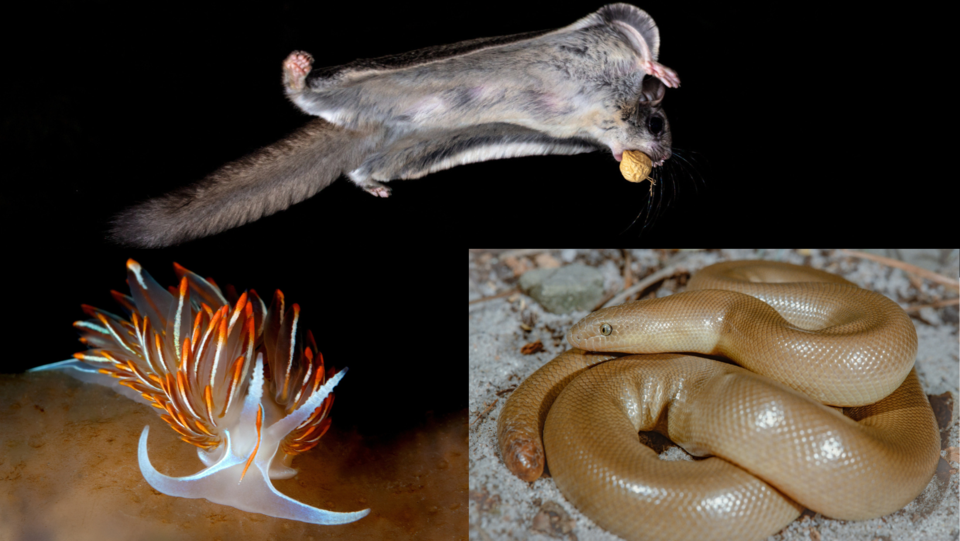One of Vancouver's strengths is its connection with the natural world.
For a city with around 2.5 million people in the metro area, there's plenty of access to nature between the nearby mountains, the ocean, and the Fraser River. And, of course, having giant parks like Stanley and Pacific Spirit helps out.
Many of the city's non-human residents are well known, from the seagulls, crows, and pigeons that are in every city to the coyotes, beavers, and seals that are spotted occasionally but always around.
But Metro Vancouver has a number of other residents that aren't seen as often and may seem a bit unusual. Here are just five of them.
1. Flying squirrels
The cutest on this list is probably these tiny little rodents. It was thought there was only one species — the northern flying squirrel — in the region, but the Humboldt's flying squirrel was identified as its own species in 2017; before that, they were thought to be the same as the northern flying squirrels.
Vancouver is close to the Humboldt's northern border, with their range going down to central California. The northern flying squirrels can be found as far north as Alaska. These tiny gliders may sound rare or exotic, but they're actually not uncommon in their range.
However, they're very small, totally nocturnal, and sleep in nests, inside trees, and underground. Also, they can glide up to 45 meters, so they can leave the area pretty quickly.
Until recently, it wasn't clear if they lived in Stanley Park, but a 2019 study detected them (using camera traps and peanut butter).
2. Rubber boas
When one hears about a boa, images of massive Amazonian serpents probably appear.
Don't fret, though, anacondas and their bigger brethren don't want anything to do with Canadian winters.
Canada does have smaller snakes, though; most often, people spot little garter snakes slithering through meadows or gardens. There are also rattlesnakes in B.C.'s interior, but not the coast.
And then there's the little constrictor known as the rubber boa — constrictors are the ones that don't have venom but wrap around their prey.
Rubber boas are in no way dangerous to people, though. For one, the biggest ones aren't longer than 3 feet. For another, they're incredibly docile; in fact, they're the species used to help people get over their fear of snakes.
That said, don't go hug one in the wild. Among the many reasons that's a bad idea is the fact they give off a strong scent if they feel threatened, like a skunk.
It's unclear where rubber boas live in the region. A report to the federal government from 2016 noted that there were historical records of them being spotted in the City of Vancouver, but the last time a sighting was confirmed was in 1960 on Marine Drive.
However, they've been spotted in the metro area and Fraser Valley since, and they're regularly spotted in other nearby parts of the province, including Pemberton and the Okanagan Valley. The report notes that residential development has damaged their habitats and dens.
That said, the report also notes rubber boas haven't been studied much in Canada, that they live a nocturnal life and hide during the day, and there may be more around than the data suggests.
3. Nudibranchs
Also known as sea slugs, these little marine molluscs can be quite the sight thanks to the bright colours many species have. While they're normally only seen by divers, once in a while, they come closer to the surface, even at Stanely Park.
Many species of nudibranchs also have the unusual ability to store the stinging cells of their prey, essentially turning it into their own defence system.
4. Pacific water shrew
The Pacific water shrew (aka the marsh shrew) looks like a fairly normal shrew, and it is...for the most part.
However, it has two unusual abilities, both water-based. One is that it's the world's smallest diving mammal (the biggest ones don't get bigger than 18 cm — including the tail — and don't weigh more than 20 g).
Their second ability is also due to how light they are and to some specialized feet.
They can run on water for up to 5 seconds.
While they're common in the U.S., the only population in Canada is in southwestern B.C. (specifically the lower Fraser Valley), and they're considered endangered due to habitat loss.
5. Bryozoan
The most unusual looking on this list is quite a strange sight. Bryozoan, or mossy animals, actually refers to an entire phylum of animals (humans exist in the Chordata phylum along with everything from hagfish to sparrows). All bryozoans are fairly simple and similar in most ways.
In the Lost Lagoon in Stanley Park, there are some; the ones there look like fleshy, slimy brains sitting submerged in the water. While it looks like it could be one creature, it's actually a colony of simple animals working together to create a more complex system.



